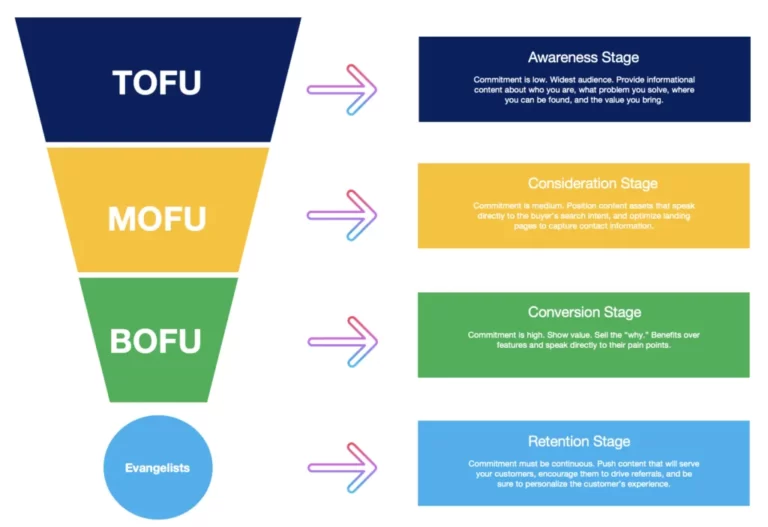More than 61% of B2B business owners agree that lead generation is one of their biggest hurdles in growing their business. With these stats coming up every now and then, no wonder a lot of B2B marketers are talking about “demand generation funnel”
A well-designed demand generation funnel can help generate leads, increase awareness about your product or service in the market, and convert that interest into sales.
But what is a demand generation funnel, what are the steps to create one, and how do you ensure that your marketing funnel is giving you leads consistently. We’ll explore answers to these questions and more in this blog post.
Let’s get into it.
What is a B2B Demand Generation Funnel?
A demand generation funnel is a marketing strategy that helps businesses create a system for generating interest and demand for their products or services. The funnel consists of multiple stages or steps that potential customers go through before making a purchase.
The stages of the funnel are designed to move prospects from being aware of your business to becoming paying customers. It’s primarily divided into three main stages.
Demand Generation Funnel Stages

The demand generation marketing funnel consists of three stages that guide prospects through a series of interactions with a brand, ultimately leading to a purchase decision:
Top of the funnel (TOFU):
This is the awareness stage where potential customers first become aware of your business and its products or services. Here you’ve to focus on creating brand awareness and educating prospects about what your business does.
Middle of the funnel (MOFU):
This is the consideration stage where potential customers start considering your business as a solution to their needs. At this stage, provide valuable information and content to help prospects make an informed decision about your brand.
Bottom of the funnel (BOFU):
This is the decision stage where potential customers are ready to make a purchase. In this last stage of the funnel, you should just be concerned about converting prospects into paying customers.
Importance of a Demand Generation Funnel for Businesses
A demand generation funnel is essential for businesses for several reasons:
- Helps you generate leads: A demand generation marketing funnel helps you create a system for generating leads and nurturing them until they are ready to make a purchase from your brand or business.
- Helps you understand your customers: Through tracking prospects as they move through the funnel, you can gain valuable insights into your customers’ needs, preferences, and behaviors.
Improves your ROI: A focused demand generation funnel allows you to concentrate your efforts on the customers who are most likely to convert which helps reduce your cost per acquisition (CPA) and improve return on investment (ROI)
Steps to Create a Demand Generation Marketing Funnel
Creating a demand generation marketing funnel is a complex process that requires careful planning and execution. To build an effective funnel that attracts, engages, and converts potential customers into loyal brand advocates, here are the steps you should follow:
1. Define Your Ideal Customer
Defining your ideal customer is the first step in creating a B2B marketing funnel strategy, including a demand generation funnel. You’ve to know your target audience’s needs, preferences, and behaviors will help you create relevant content and offers that will resonate with them.
To define your ideal customer, you need to research and analyze your target audience’s needs, preferences, and behaviors. Some factors involved are demographic such as gender, income, education, etc; and others are psychographic, like interests, values, beliefs, and pain points.
You can use tools such as customer surveys, market research, and social media analytics to gather this information. Once you have a clear understanding of your ideal customer, you can tailor your marketing strategy to address their specific needs and preferences, improving the chances of converting them into paying customers.
2. Create an Offer and Landing Page

An offer and landing page are crucial components of a B2B demand generation funnel. The offer should be compelling and relevant to your target audience, while the landing page should be optimized for conversions with clear calls-to-action and forms.
To create an offer, start by understanding your target audience‘s needs and pain points and creating a valuable solution that solves their problems. This could be a free guide, white paper, eBook, discount offer, or other incentives that align with your business’s objectives.
When your offer is ready, create a landing page that showcases your offer’s benefits and uses persuasive copy and imagery to encourage your visitors to take action. This could include including a clear call-to-action (CTA) that stands out on the page, such as a button or form that visitors can use to claim their offer.
3. Develop a Content Strategy

A content strategy is a critical component of a demand generation funnel as it helps you attract and engage potential customers. The content should be relevant, valuable, and engaging to your target audience, helping them move through the funnel. Even fundamental marketing tactics like email can drive leads as happened with one of our clients.
Developing a content strategy that aligns with your demand generation funnel requires a deep understanding of your target audience’s needs and preferences. Start by conducting research to identify the topics and formats that resonate with your target audience.
Prioritize your continent ideas based on your business objectives and your audience’s preferences. Then, create a content calendar that outlines the topics, formats, and distribution channels for each piece of content.
4. Drive Traffic
Driving traffic to your website and landing pages is critical in a demand generation marketing funnel. One effective way to drive traffic is through search engine optimization (SEO). By optimizing your website and content for relevant keywords, you can improve your search engine rankings and attract more organic traffic. Another way to drive traffic is through paid advertising, such as Google Ads, social media ads, or display ads.
Paid advertising allows you to target your ideal audience with precision and drive targeted traffic to your landing pages. Additionally, email marketing can be an effective way to drive traffic to your landing pages by sending personalized messages to your subscribers. Monitor your traffic sources and adjust your strategy based on your audience’s behavior to get the most out of your efforts.
5. Collect the Data
Collecting data is an essential step in a demand gen strategy, as it allows you to measure the effectiveness of your marketing efforts and make data-driven decisions to improve your performance. Tools like Google Analytics help you collect this data and get valuable insights into your website’s traffic, user behavior, and conversion rates.
You can also use marketing automation software to track your visitors’ behavior and interactions with your landing pages and emails. This can include tracking how long visitors stay on your landing pages, which pages they visit, and whether they convert into leads or customers.
When you collect and analyze this data, you will identify areas for improvement in your funnel and you can then optimize your marketing efforts to improve your conversion rates. Just ensure that you set up your tracking and analytics tools correctly, so that the data is accurate and reliable, and you can review your data to identify trends and patterns.
6. Measure and Optimize Your Funnel
Measuring and optimizing your demand gen funnel is a continuous process that requires ongoing monitoring and improvement. You need to track your visitors’ behavior, conversion rates, and other key metrics such as bounce rates, time on page, and click-through rates to measure the performance of your funnel.
There are analytics tools that you can use to generate reports and dashboards that provide insights into your funnel’s performance and identify areas for improvement. Use A/B testing to test different variations of your pages and offers to determine which ones perform best. Just remember to test one metric at a time and align your optimization efforts with your business objectives.
Final Words
A well-executed demand generation marketing funnel can be a powerful tool for driving leads and revenue for your B2B business. By following the steps we’ve outlined in the post, you can attract and convert potential leads into customers and increase your bottom line.
So take action and begin creating a demand generation marketing funnel strategy that delivers results for your B2B business today.
Author
-

Yash Chawlani is a B2B Marketing Consultant and Co-founder of Magefunnel, a top-tier B2B Lead Generation Company. With over 5 years of experience in the B2B SaaS space, Yash has helped numerous SMBs and Enterprises grow their businesses through effective Demand Generation strategies and Content Syndication campaigns.



